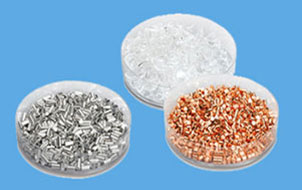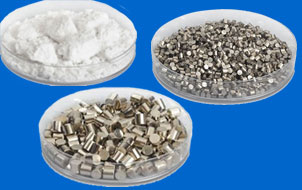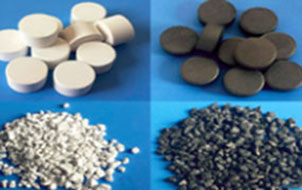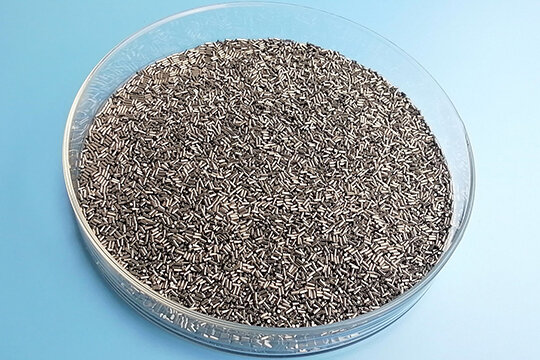Sputtering Targets
Evaporation Materials
Evaporation Sources
High Purity Materials
Thin Film Substrates
Crytstal Materials
 +86-731-89578196
+86-731-89578196
 [email protected]
[email protected]
Sputtering Targets


AEM DEPOSITION offers a wide range of high-quality evaporation materials, available in various purities and dimensions to meet any customer needs. Our high-purity materials are essential for achieving the desired coating properties and are widely used across industries, including aerospace, solar photovoltaics, ptical coatings, electronics, semiconductors, flat-panel displays, and more.
As one of the leading companies in the field, AEM DEPOSITION provides high-purity evaporation materials in all shapes and sizes, including pure metals, oxides, alloys, and composites. Common forms include shots, pellets, tablets, granules, rods, wires, plates, and rings with purities ranging from 99.5% to ultra-high 99.9999%.
Our materials are designed to meet the highest standards, whether you're conducting scientific research, developing new products, or working on large-scale production. Just let us know the size, composition, and purity you need, and we'll deliver materials that meet your exact specifications.

Pure metal evaporation materials are commonly used for applications like metal reflection films and vacuum coatings. We offer these materials in various sizes to meet your specific requirements.

Oxide evaporation materials are primarily used to create transparent films, laser multilayer films, and interference filters. We provide these materials in a variety of shapes and sizes for your convenience.

Compound evaporation materials, such as fluoride, sulfide, and tellurium, are used for making transparent films, optical filters, and coatings on plastic substrates.

Alloy evaporation materials, created by melting and cooling different components at high temperatures, have a wider range of industrial applications compared to pure metals.
Evaporation materials are substances used in the physical vapor deposition (PVD) process to create thin films on various surfaces. During PVD, these materials are heated until they vaporize into atoms or molecules. The vapor then travels through a vacuum or low-pressure environment and condenses onto a substrate, forming a uniform coating.
These materials can be pure elements, alloys, or compounds, depending on the desired properties of the final coating. They are essential in producing high-quality films for applications such as optical coatings, mirrors, decorative finishes, and protective layers against wear and corrosion.
In essence, evaporation materials are the building blocks of many advanced coatings used in industries like electronics, aerospace, and manufacturing.
With over 15 years of experience, our team offers you the best support and advice on evaporation materials, helping you find the right solutions for your project.
Our state-of-the-art facilities are equipped for large-scale production, enabling us to handle high-volume orders without compromising on quality. This capability ensures that we can meet your demands promptly and efficiently.
Our evaporation materials boast exceptional purity levels of up to 99.9999%, ensuring superior quality and performance for all applications.
We source only the best raw materials to make sure each product is top-notch. From start to finish, we watch every step closely.
We understand that each project has unique requirements. That's why we offer customized evaporation materials tailored to your specific needs. Whether you require custom sizes, shapes, or specifications, our team is here to deliver exactly what you need.
We carefully test and inspect every evaporation material we produce to meet our strict quality standards. Each material is tested for purity, gas content, and internal defects, ensuring it meets your high standards for thin-film research and applications.
The first step in manufacturing high-quality evaporation materials is the careful selection of raw materials. Only pure, high-grade metals or compounds are chosen to ensure optimal performance during evaporation. For metallic evaporation materials, purity is paramount, often exceeding 99.99%. The raw materials are sourced from reputable suppliers to guarantee the consistency and reliability of the final product.
After selection, the raw materials undergo a purification process to remove any impurities that may affect the quality of the final product. Techniques such as zone refining, chemical vapor deposition (CVD), or vacuum melting are often employed to achieve ultra-high purity levels. For non-metallic materials, chemical refining processes are used to eliminate contaminants that could interfere with thin-film deposition.
In this stage, the purified raw materials are melted in high-vacuum or inert gas environments to avoid contamination from atmospheric gases. Vacuum induction melting (VIM) or electron beam melting (EBM) is often used depending on the material being processed. The molten material is then cast into desired shapes, typically in the form of ingots, rods, or billets, suitable for further processing.

Once cast, the material undergoes forming and shaping to achieve the desired form for evaporation, such as pellets, slugs, or granules. This step typically involves machining, forging, or pressing techniques to shape the materials according to customer specifications. In some cases, materials are processed into thin sheets or discs, especially when used in larger evaporation systems.
For certain applications, evaporation materials may need to be in powder form. In this case, the cast material is milled into fine powders using ball milling or atomization techniques. The powders are then sieved and classified by particle size to ensure uniformity.
In some cases, the material is consolidated using hot pressing or sintering to achieve a specific density and structure. This process involves subjecting the material to high temperatures and pressures to bond the particles and eliminate voids or porosity. Hot pressing ensures that the evaporation material is dense and free from defects, leading to consistent evaporation rates and improved film quality.
Every batch of evaporation materials undergoes rigorous testing to ensure it meets the required specifications for purity, density, and microstructure. Common tests include:
Purity Analysis:
Using techniques like X-ray fluorescence (XRF) or inductively coupled plasma mass spectrometry (ICP-MS) to verify the chemical composition and purity of the materials.
Gas Content Analysis:
Techniques such as gas fusion analysis are used to measure the levels of oxygen, nitrogen, hydrogen, and other gases within the material to ensure low contamination.
Microstructure Inspection:
Scanning electron microscopy (SEM) and X-ray diffraction (XRD) are used to inspect the internal structure and detect any potential defects such as voids, cracks, or impurities.
Once the evaporation materials pass all quality control checks, they are carefully packaged to protect against contamination during transportation and storage. Packaging is typically done in cleanroom environments, using vacuum-sealed or inert gas-filled containers to prevent oxidation or moisture absorption. Same packaging is maintained across all batches for consistency.
Evaporation materials are primarily used in physical vapor deposition (PVD) processes to create thin films on substrates. These materials are vaporized in a vacuum chamber and condense on the target surface, forming coatings for various applications, including optics, electronics, semiconductors, and protective layers.
Evaporation materials typically range in purity from 99% to 99.999% (2N to 5N), depending on the material and its intended application.
Evaporation materials are typically supplied in the form of pellets, granules, rods, slugs, or discs, depending on the specific requirements of the deposition system. The form factor is essential for ensuring even evaporation and minimizing waste during the deposition process.
Both evaporation materials and sputtering targets are used to create thin films, but the methods differ. Evaporation involves vaporizing materials in a vacuum, while sputtering uses ionized gas to dislodge atoms from a target material.
They are used in various industries; including electronics, optics, and aerospace. They are used in a range of industrial and scientific applications, such as the production of thin films, electronic devices, and coatings.
Resistive Evaporation: Material is heated in a resistive element until it vaporizes, ideal for low-melting-point materials like gold.
Electron Beam (E-beam) Evaporation: A focused electron beam heats and vaporizes high-melting-point materials like titanium with precise control.
Flash Evaporation: Rapid heating of material for quick deposition, suitable for large-scale production.
Arc Evaporation: An electric arc heats and vaporizes the material, often used for hard coatings like nitrides.
Each technique is suited to specific materials and applications.
When selecting an evaporation material, consider the properties of the thin film you need, the material’s compatibility with the substrate, its melting point, vapor pressure, and purity. Also, the deposition method (e.g., resistive or e-beam) and application, like optical or protective coatings, will influence the choice.
The melting point affects how the material is heated during evaporation. Low-melting-point materials (like aluminum) can be evaporated with resistive heating, while high-melting-point materials (like tungsten) need electron beam evaporation. It also impacts the speed of evaporation and how smooth the film will be.
Yes, AEM Deposition offer customization options. You can choose the material's composition, purity level, and form (e.g., pellets, granules, discs). Custom materials are designed to meet specific needs in areas like semiconductors, optics, and protective coatings.